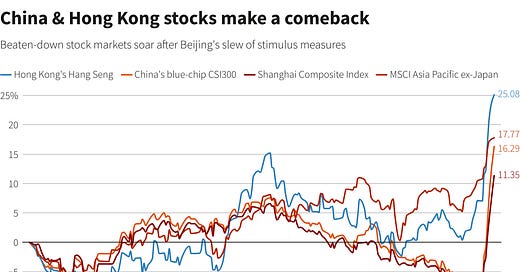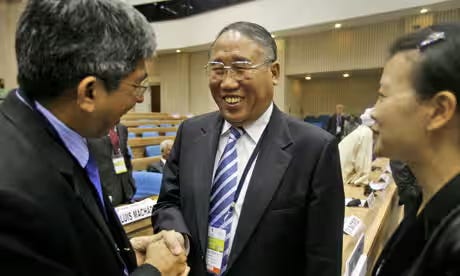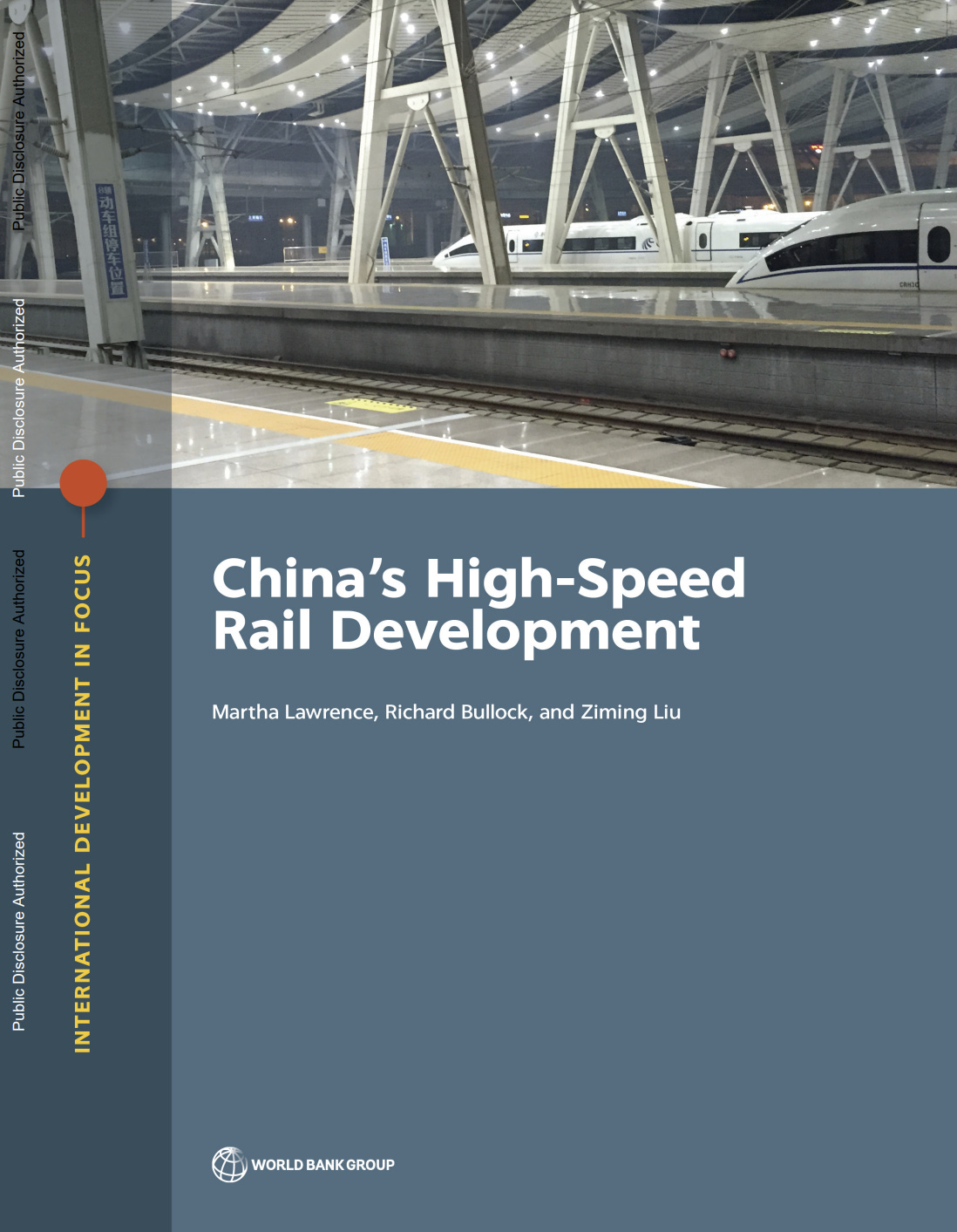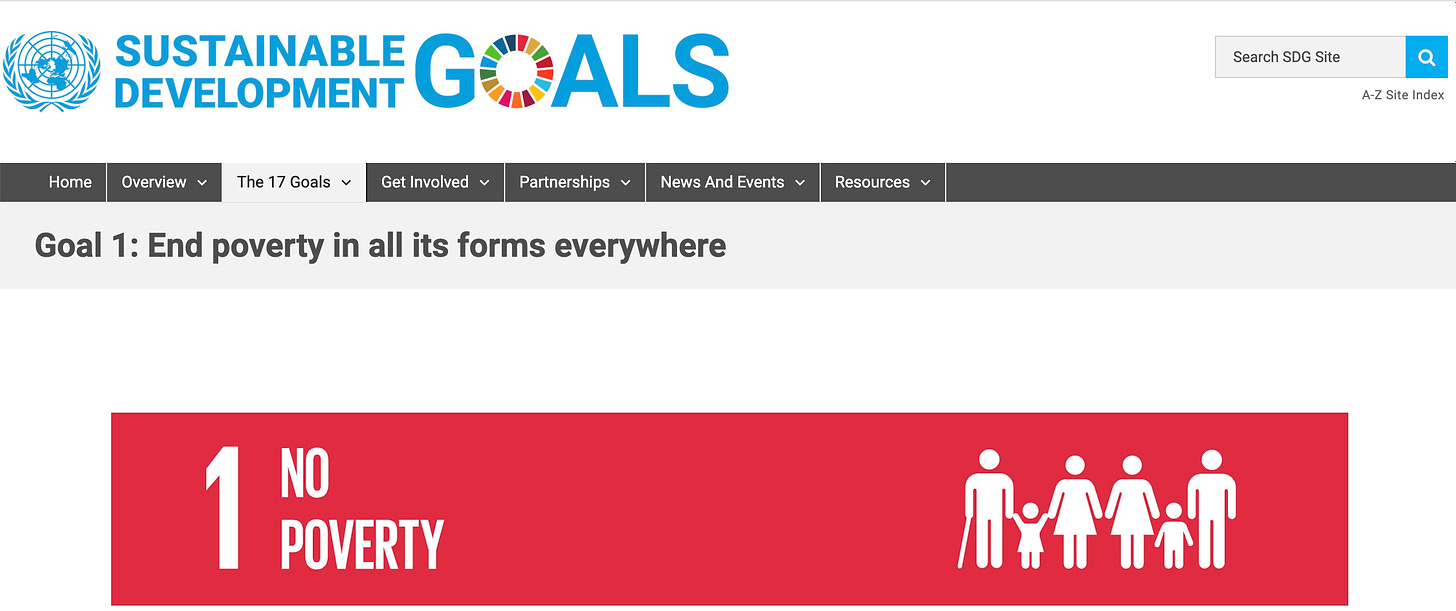Best week for Chinese stock market since 2008; 75th anniversary of the founding of the PRC
Stocks, climate change response, transportation, poverty eradication
Hello everyone. This week we celebrate the 75th anniversary of the founding of the People's Republic of China (PRC). The week leading up to this milestone anniversary brought unexpected developments as the Chinese government introduced a series of policies that exceeded market expectations. The robust performance of China’s stock market and positive feedback from international investors, including notable figures like David Tepper, underscore the global interest in these developments.
Chinese stocks post best week since 2008 after stimulus blitz -- Financial Times
Chinese equities have surged to their best week since 2008 after Beijing launched an economic stimulus package including a $114bn war chest to boost the stock market.
The CSI 300 index of Shanghai- and Shenzhen-listed companies is up 15.7 per cent for the week in its best performance since November 2008, when China announced a similar stimulus package in response to the global financial crisis.
The rally, which has also helped buoy European markets and industrial metals, comes as China’s leadership rushes to support the country’s capital markets, stabilise a property sector crisis and boost domestic consumption in order to meet its economic growth target of 5 per cent for the year.
I anticipate that China observers on platforms such as Substack will soon share their insights on the logic behind the recent performance of China's stock market. Yang Liu (founder of Beijing Channel), Robert Wu (founder of China Translated) and me had a discussion on the recent policies and the market performance in the latest episode of Got China on YouTube.
Investors are saying buy "everything" China, Why? -- Got China
Meanwhile, I have been exploring related articles on WeChat blogs. One particularly intriguing piece I came across, but have yet to finish, is titled “深度|一个10万亿经济刺激计划, 是否符合中国当下的需求?In-Depth | A 10 Trillion Yuan Economic Stimulus Plan: Is It What China Needs Now?” published on Sept. 28 on the WeChat blog of "文化纵横 Wenhua Zongheng - Quarterly Journal of Chinese Thought" under the Association for promotion of West China Research and Development (中国西部研究与发展促进会).
The article features insights from 刘世锦, Liu Shijin, former vice president (vice minister) and research fellow of the Development Research Center (DRC) 国务院发展研究中心原副主任, a comprehensive policy research and consulting institution directly under the State Council, and prominent economists from China's top universities, 滕泰 Teng Tai and 李稻葵 Li Daokui discussing the advisability of adopting an economic stimulus strategy similar to that of 2008, involving a proposed 10 trillion yuan package. Opinions among these top experts vary significantly.
Recognizing that many of our newsletter readers prefer direct information that can guide investment decisions, I understand that such nuanced debates, especially on macroeconomic strategies, might not yield the clear conclusions you seek. However, to gauge interest, I will conduct a poll: if at least 30 subscribers express interest, I will translate the full article after the National Day holidays.
Today’s newsletter aims to resonate with the ceremonial spirit of the 75th anniversary. Traditionally, in China, every fifth anniversary is marked with a modest celebration, while every tenth is a major event. In this sense, today’s piece revisits some of China’s significant achievements over the past 75 years—a journey marked by notable successes and challenges.
We focus on three pivotal areas: climate change, transportation infrastructure, and poverty alleviation—topics of global relevance, though the solutions China pursues may not be 100% universally applicable as the principle of adapting strategies to local conditions remains a universally relevant approach.
1.Climate change response
Addressing climate change and transitioning to cleaner energy are common challenges facing the world today. However, the challenges faced by developed and developing countries are not exactly the same. Developed countries must shift their already mature industrial, manufacturing, and consumption systems toward a low-carbon future. Developing countries must ensure rapid growth and solve underdevelopment issues while simultaneously undergoing a green transition.
This remind me of 谢振华 Xie Zhenhua, a key official in China’s response to climate change. Those familiar with China’s climate negotiations at global conferences might remember Xie's 2011 speech in South Africa, where he addressed the responsibilities of developed countries.
For some Chinese netizens, Xie appears to be an outspoken Chinese official who reflects the courage of engaging with his foreign counterparts on climate change issues. A video from nine years ago shows Xie, as the head of Chinese delegation, harshly criticizing developed Western countries, which went viral on Chinese social media recently.
"Are you qualified to reason with me? We are a developing country, we need to develop and eliminate poverty, we need to protect the environment. We've done all we could do, but you [Western countries] could not do it," Xie angrily told some Western countries at the Durban Climate Change Conference in 2011.
Yet, China has also been actively encouraging developing nations to take action on climate change and is widely regarded as a leader in this area.
Climate talks: China calls on developing countries to 'step up' -- Guardian
But Xie believes that China's proposal offers a new way forward, by stipulating that developing countries must also play their part, though within a different framework from the rich world.
He called on all emerging economies to bring forward plans that would demonstrate their willingness to curb the growth of their emissions. These national plans would not necessarily have the same legal status as commitments under a new version of the Kyoto protocol – for instance, they could be tied to economic conditions, or be binding at a purely national level - but Xie believes that these plans should be enough to persuade rich countries of the earnestness of developing countries´intentions.
Many developing countries look to Beijing for leadership on this issue, so Xie's ideas are likely to be influential. Xie, who played a prominent role in Copenhagen talks in 2009, is a major figure in the negotiations, and presented his proposal as a way to break the current deadlock.
China's chief climate change official, Xie Zhenhua, called on emerging economies to bring forward plans that would demonstrate their willingness to curb the growth of emissions. Photograph: AP
That was 13 years ago, and since then, China’s commitment to climate action has only deepened. China has made significant strides in environmental protection, with notable improvements in air, water, and overall ecological quality.
According to Minister of Ecology and Environment Huang Runqiu, the public's satisfaction with the environment rose from less than 80% in 2017 to over 91% in 2023. Nationwide, the average PM2.5 concentration in key cities dropped by 54% over the past decade, while good air quality days have reached over 86% for four consecutive years. Water quality has also improved, with 89.4% of surface water bodies achieving excellent status in 2023. Additionally, China's forest coverage has reached 24.02%, contributing to 25% of global reforestation since the beginning of the century. In reducing pollution and carbon emissions, China has eliminated outdated coal and steel capacity and now operates the world’s largest clean power and steel production systems.
China has historically advocated the Scientific Outlook on Development, with sustainable development as a core component. Presently, Chinese policymakers are advancing the Chinese-style modernization, one of whose five key features is the harmonious coexistence of humans and nature. Over the past two decades, despite changes in leadership, China's commitment to ecological civilization, green growth, and sustainable development has remained steadfast. This persistent policy direction has been crucial in enabling China to make measured strides toward a low-carbon transition.
China’s comprehensive approach to green development in recent years, from top-level planning to addressing ecological and environmental pollution across various regions, and its rapid transition to new energy vehicles all reflect how it has emerged as a leader in climate response, ahead of many other nations.
At the 2022 COP15 summit in Montreal, China, as the chair, successfully facilitated the adoption of the landmark Kunming-Montreal Global Biodiversity Framework after nearly a decade of negotiations. The agreement was met with widespread recognition for China’s leadership in global biodiversity protection. China has also been instrumental in global climate change efforts, playing a key role in the Paris Agreement and pledging to peak carbon emissions before 2030 and achieve carbon neutrality by 2060.
Additionally, China has stopped building new overseas coal projects, provided renewable energy support to developing nations, and signed climate cooperation agreements with over 40 countries. Over the past decade, China’s technological advancements in renewable energy have driven global wind and solar power costs down by over 60% and 80%, respectively, cementing its status as a leader in global environmental governance.
Of course, China's journey towards low-carbon development has not always been without challenges. Due to the national priority placed on green development, some regions have overly emphasized low-carbon initiatives to the detriment of other developmental sectors. To address these issues, the Chinese government promptly enacted relevant policies to correct the imbalances.
China to rectify "campaign-style" carbon reduction: NDRC -- Xinhua
China will rectify deviations in its effort to cut carbon emissions while resolutely curbing the pell-mell development of high-energy intensity and highly pollutive projects, the country's top economic planner said Tuesday.
In the process of cutting carbon emissions, some regions have set overly ambitious and unrealistic goals or simply chanted slogans without taking actions, while some industries failed to make solid energy-saving efforts in the hope that certain technology would solve the problem once and for all, said Meng Wei, spokesperson for the National Development and Reform Commission (NDRC), adding that these issues must be addressed.
Meng also pointed out problems such as a "one-size-fits-all" approach in shutting down energy-intensive projects and a sudden cut-off in loans to coal-fired power projects.
"These phenomena run counter to the original intention and requirements of peaking carbon emissions and achieving carbon neutrality and must be resolutely corrected," Meng said.
The statement echoed an announcement made at a recent meeting attended by the country's top decision-makers, which urged putting an end to "campaign-style" carbon reduction and resolutely curbing high energy-consuming and high-emission projects.
As is widely recognized, China currently faces some economic challenges, but I believe that the Chinese government will remain steadfast in its commitment to addressing climate change.
2.Nationwide efficient transportation system
"To get rich, build roads first." The popular Chinese proverb manifests people's emphasis on the relationship between the development of transportation and their well-being. Building an efficient transportation system can not only drive economic growth through increasing connectivity, but also promote social fairness by ensuring people's access to more opportunities across wider areas at lower costs.
However, the rapid construction of traffic system is definitely no easy feat. Many countries, even the developed ones, find it difficult to complete their transportation programs as scheduled.
Take the United States for example. With a robust network of highways and aviation, the country is still beset by its lack of momentum in the development of high-speed railway (HSR) systems. Donald Trump expressed his dissatisfaction with the status quo during his recent online conversation with Elon Musk on X, formerly known as Twitter:
Donald Trump Wants Bullet Trains in America: 'Doesn't Make Sense' -- Newsweek
Speaking about bullet trains, Trump said: "They [China's HSR] go unbelievably fast, unbelievably comfortable with no problems, and we don't have anything like that in this country. Not even close. And it doesn't make sense that we don't, doesn't make sense."
Despite all the praises for bullet trains from the former president, some pointed out that it is the Trump administration who cancelled nearly a 1 billion U.S. dollars grant to California's HSR project in 2019, which had long been plagued with extensive delays and cost overruns. Although the Biden administration restored funding for the construction in 2021, the shifting policies from the federal government are bound to inject uncertainty over its progress.
The development of large-scale transportation systems cannot sustain without strong and stable financial support from central authorities. In an interview with Fortune, Stephen Gardner, Amtrak CEO, attributed the shortage of HSR in the United States to the reluctance of politicians to fund it.
There’s not a technical barrier to building high-speed rail. But what you need is political and financial alignment to make the investment.
What lies behind the disagreement among those policymakers can be quite intricate, involving factors such as different views on the priority of allocating funds for transportation, lobbying from stakeholders whose vested interests would be impaired by the projects, restrictions on international cooperation in sectors related to federally funded infrastructure, among others.
Similar disputes may arise in many developed countries and hinder their commitment to improving transportation systems efficiently, let alone those underdeveloped countries running short of money, technology, and personnel.
Compared to other countries, China faces unique challenges due to its vast population and extensive land area, which features a wide range of geographical terrains. This diversity leads to uneven development, with some regions—particularly in the central and western parts—having less developed transportation infrastructure than the eastern coastal areas. As a result, these less developed areas lag economically, lacking the resources and capabilities to improve their transportation systems, which perpetuates a vicious cycle of underdevelopment.
However, the Chinese policymakers did not surrender to the hurdles in its pursuit of traffic modernization and have always attached great importance to the development of transportation for a country as large as China.
China's development of railway systems showcases the country's swift advancements in the transportation sector. When the PRC was established in 1949, the nation had only 21,800 kilometers of railway tracks, nearly half of which were inoperative, placing it significantly behind in railway transportation. Over the past 75 years, through relentless efforts, China has expanded its operational railway network to over 160,000 kilometers—four times the Earth's circumference.
The development speed of HSR in China is even more impressive. It is worth noting that before the 21st century, there was no HSR across the whole country, but up to date, the operating mileage of China's HSR has reached 46,000 kilometers, ranking first in the world and exceeding the combined total of all other countries' HSR networks. In addition, the country's HSR also takes the lead in the following aspects:
Rapidity: China boasts the fastest commercial HSR service in the world, as the only country to achieve commercial operation of HSR trains at the speed of 350 kilometers per hour.
Safety: China has the safest HSR service worldwide. During the 2008-2020 period, the average accident rate per hundred kilometers of HSR in China was 82 percent lower than that of foreign HSR.
Availability: China's HSR currently serves 96 percent of cities with more than 500,000 residents, and offers a variety of online services including buying tickets, choosing seats, and ordering meals, based on the world's largest internet railway ticketing system.
Affordabiltity: The average ticket price of HSR trains in China is approximately one-third to one-fourth of that in other countries, enabling the passengers to enjoy high-quality HSR services at lower costs.
What is the secret of the country's achievements in developing its railway systems in such an efficient and effective manner? A report titled China's High-Speed Rail Development published by the World Bank in 2019 attempted to offer an answer to this question.
Among the listed potential lessons and replicable practices, the following item is highlighted:
A well-analyzed Long-Term Plan, supported by government, with minimal changes once approved
In 2004, China issued a medium- and long-term plan for the development of railway network, including the construction of an HSR network. The deliberately-analyzed document, updated twice in 2008 and 2016, has provided a clear and consistent framework for action in the past two decades, and will continue to play its guiding role in the near future.
Such a milestone plan cannot be formulated overnight. Before the introduction of the scheme, China had also been engaged in years-long discussions on topics like whether to build HSR and how to develop the massive project from scratch, and gradually kicked off its own explorations with different technical routes while learning from other countries. During this tough process, the country made its resolution to develop HSR considering its urgent demands and favorable conditions and follow the path of combining indigenous innovation with technological introduction.
With clear goals ahead, the central government would mobilize nationwide resources to push for the implementation of the plan, and all entities involved would focus on their own duties based on their firm belief that the authorities would provide consistent support for the cause, just as they did all the time. The following description from the World Bank report shows the coordination between different parties in the HSR development:
The lines have been constructed from the start through special-purpose asset construction and management companies. These companies are normally joint ventures between the central and provincial governments. This structure secures the active participation of local government in planning and financing the projects. Cooperation among rail manufacturers, universities, research institutions, laboratories, and engineering centers enables capacity development, rapid technological advancement, and localization of technology.
Rather than embroiling itself in endless disputes, China has leveraged the role of various sectors and facilitated the government-industry-academy cooperation to implement its grand program from financial investment to technological breakthrough.
China's remarkable achievements in other areas of transportation share simliar logic of success in HSR development, featuring mechanisms for mobilizing national support. Thanks to comprehensive planning, consistent investment, and effective coordination, the country has topped globally in multiple transportation indicators, including the mileage of expressways, navigable inland waterways, and urban rail transit, and has ensured access to hardened roads, bus services, and postal services in all townships and administrative villages with feasible conditions, connecting those in remote areas to the broader world.
With its rich experience in transportation development and a sense of responsibility as a major country in today's world, China has been assisting other developing countries in building their own transportation system through infrastructure and connectivity programs like the Belt and Road Initiative (BRI).
For example, Chinese companies have been involved in the construction and renovation of over 10,000 kilometers of railways and nearly 100,000 kilometers of highways in various African countries, according to a recently-released report on the achievements of China-Africa cooperation under the BRI. Through these efforts, China has been sharing its advanced technology, management experience, and professional personnel with other countries to help them gain internal strength for long-term growth.
3.Poverty eradication
In a world with increasing interconnectedness, poverty eradication remains a formidable challenge for every country around the world, and its consequences extend far beyond individual hardships; they impact economic stability, social cohesion, public health, sustainable development, human rights, and global security.
Despite ongoing efforts, many countries continue to struggle with systemic issues like inadequate education, limited access to healthcare, and insufficient job opportunities, which perpetuate the cycle of poverty.
As of April 2024, per data from the World Bank Group, around 700 million people live on less than 2.15 U.S. dollars per day, the extreme poverty line. Extreme poverty remains concentrated in parts of Sub-Saharan Africa, fragile and conflict-affected areas, and rural areas.
The United Nations has recognized the urgency of addressing poverty through the Sustainable Development Goals (SDGs), particularly Goal 1, which aims to end poverty in all its forms everywhere by 2030.
Since 2012, China has fought a strenuous eight-year-long battle against poverty that is unprecedented both in scale and intensity. At the end of 2020, China achieved the goal of eliminating extreme poverty. The 98.99 million people in rural areas who were living below the current poverty threshold all shook off poverty. All the 128,000 impoverished villages and 832 designated poor counties got rid of poverty.
Standards for poverty alleviation in China have always been formulated according to its then social and economic development and the basic living needs of its poor populations. As the situation evolved and developed, specific standards were correspondingly adjusted to better reflect the latest realities and facilitate poverty identification and alleviation.
In the final stage of fighting extreme poverty from 2012, the impoverished people in China were registered and deregistered by household, and the standards are as follows:
主要衡量标准是“一收入”“两不愁三保障”。“一收入”就是该户年人均纯收入稳定超过现行国家扶贫标准,“两不愁三保障”就是稳定实现不愁吃、不愁穿和义务教育、基本医疗、住房安全有保障。
The criteria are personal incomes, and the household's situation with reference to the Two Assurances and Three Guarantees. The former requires that the annual average per capita income for a household remains steady above China's current poverty line. The latter refers to guarantees of adequate food and clothing, and access to compulsory education, basic medical services, and safe housing for impoverished rural residents.
China's standards for deregistering those who have emerged from poverty are comprehensive, including income, and the extent to which they are assured the rights to subsistence and development.
During the press conference for the 20th Communist Party of China (CPC) National Congress in October 2022, spokesperson 孙业礼 Sun Yeli answered this question, saying that the results have exceeded initial expectations set during the reform and opening-up and met the goals set in the 18th CPC National Congress in 2012.
By 2020, China’s GDP has reached 101.6 trillion yuan, with a per capita GDP surpassing $10,000. Over 400 million people have entered the middle-income bracket, creating the largest and most dynamic middle-income population globally, while the Engel coefficients for urban and rural residents decreased to 29.2% and 32.7% respectively.
Pertaining to the fact that poverty eradication work in China covers a wide range of areas and is extremely complex, China has established a poverty eradication management network with the central government acting as coordinator, provincial governments taking overall responsibility, and city and county governments overseeing implementation.
The network covers all poor areas and officials are sent to villages to help every needy household. The first group of working teams was dispatched to poor villages in 2013. By the end of 2020, 255,000 resident teams and more than 3 million officials had been dispatched to poor villages, alongside nearly 2 million township officials and millions of village officials.
To prevent and address any corruption and misconduct along the way, China conducted the strictest-ever evaluations and supervision, as well as specialized inspection tours, in a bid to ensure solid and authentic outcomes that could survive the test of time and practice.
Media also plays an important supervisory role in China's poverty alleviation process. On April 23, 2021, China Media Group reported that villagers in Lingkou County in northwest China's Shaanxi Province had been living in destitution with no access to drinking water after the county had claimed to have improved living conditions and withdrawn from the poverty-stricken list a year ago.
The Shaanxi provincial government immediately dispatched investigation panels to the villages in question to carry out an all-around investigation that evening, and after a three-day examination, it announced the results to the public, recognizing that although the deregistration of the county fulfilled the criteria, there was still room for improvement regarding water safety and official conduct.
Home to nearly one-fifth of the world's population, China's complete eradication of extreme poverty – the first target of the 2030 UNSDGs – 10 years ahead of schedule, is a milestone in the history of the Chinese nation and the history of humankind. Over four decades of reform and opening up, 750 million people have been lifted out of poverty in China, accounting for over 70% of global poverty reduction.
While advancing its own poverty reduction, China has consistently provided assistance to global poverty alleviation efforts to the best of its capacity.
For example, China established the China-United Nations Peace and Development Trust Fund, and the South-South Cooperation Assistance Fund and has actively promoted cooperative projects under the Belt and Road Initiative. According to a World Bank study in 2019, the initiative will help 7.6 million people out of extreme poverty and 32 million out of moderate poverty in these countries.












China’s poverty eradication team deserves the Nobel peace prize! The HSR network is a real marvel, arguably one of the seven wonders of the modern world.